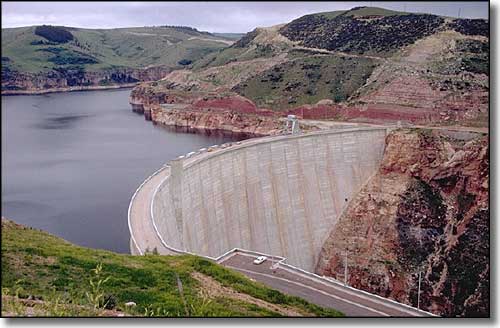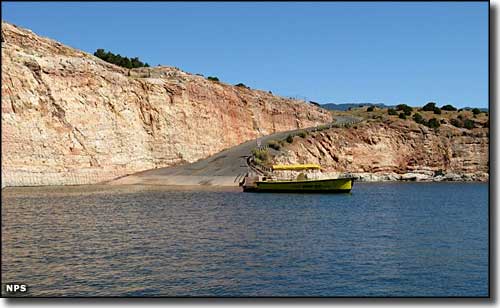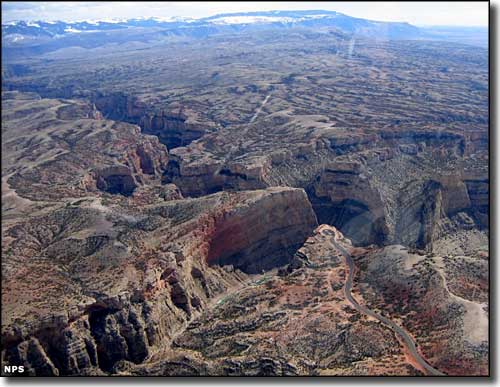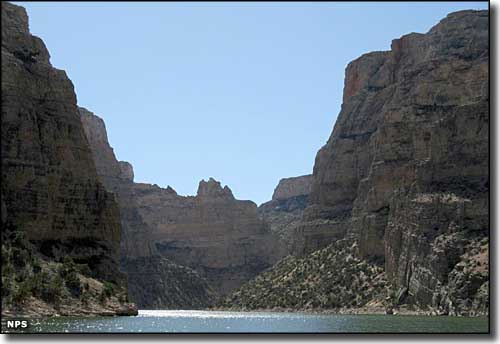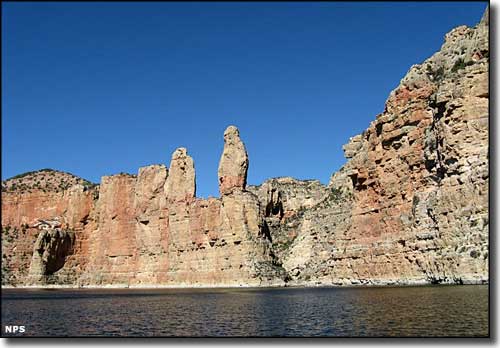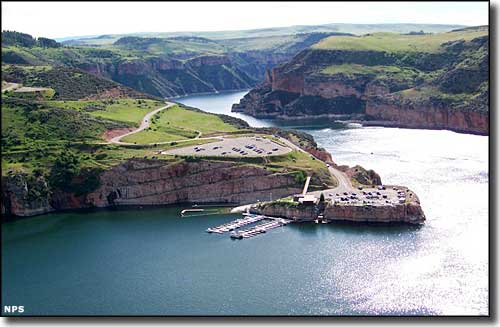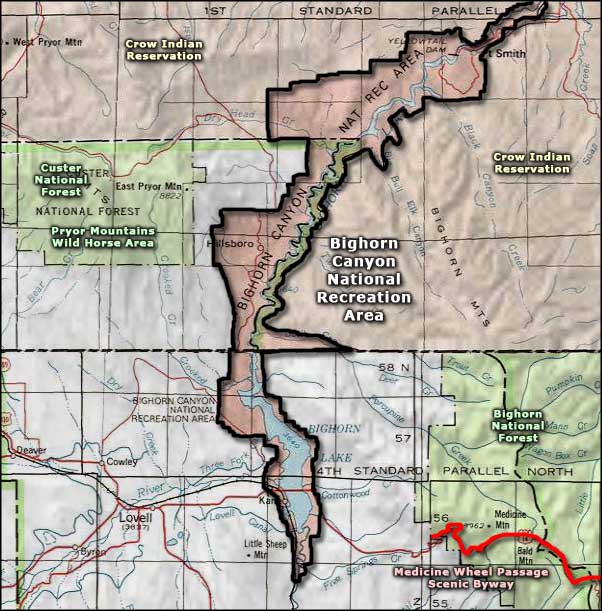
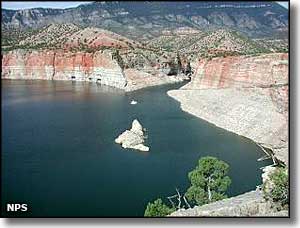
Bighorn Canyon National Recreation Area encompasses some 120,000+ acres straddling the Wyoming-Montana border. The prize of the Recreation Area is Bighorn Lake, which stretches 71 miles through the two states, with 55 miles of the lake contained in Bighorn Canyon. This is a diverse landscape of mountains, forest, prairie, valleys, canyons, lake, wetlands, and high desert. Bighorn Canyon National Recreation Area has a visitor center near Lovell, Wyoming and another one in Fort Smith, Montana.
Bighorn Canyon is a geological wonderland displaying half-mile high cliffs with layer after layer of fossils, and clearly defined testaments to the power and magnitude of past Earth changes to these once-level layers of sedimentary rock and sandstone. Once upon a time this was ocean bottom, then coastal tropical marshlands, then conifer forests filled with many species of dinosaurs. As the ground was slowly pushed up over the millenia, the Bighorn River slowly eroded its way down some 2,200 feet into the sedimentary deposits. The canyon thus created made crossing this area nearly impossible: this was a natural barrier that simply had to be gone around. Even now, 40-some years after the Yellowtail Dam was built, the area retains most of its extreme and pristine wildness.
Kayaking and canoeing on the lake are very popular, as is scuba diving and snorkeling (but look out for the wild and crazy jet skis and motor boats). The fishing for lake trout, brown trout, perch, catfish, burbot, and others is supposed to be excellent. There's elk, black bear, mule deer, and bighorn sheep in the area, but if you watch where you're walking you could just as easily come across the preserved (fossilized) remains of a camel, steppe bison or woolly mammoth. There are also miles and miles of hiking trails along the Bighorn and Devil's Canyon rims, just be careful of the steep drop-offs at the overlooks and other viewpoints.
